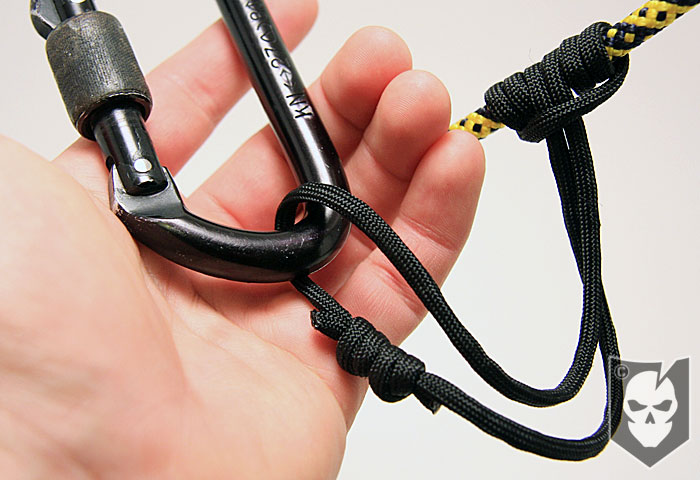
This week we’d like to continue where we left off with our Knot of the Week, by introducing the Prusik Knot. The Prusik is the one of the earliest known “gripping” knots named after Austrian mountaineer Dr. Karl Prusik.
The Prusik Knot is a friction hitch, which works by gripping the rope and providing friction to support a climbers weight. The number of wraps around the main line will determine how tight the grip on the rope will be…more than three is considered excessive.
A pull from either direction from the tail of the Prusik will tighten the grip, effectively locking the knot. While traditional mechanical ascenders can damage a rope, the Prusik will easily slide when pushed by the barrel of the knot and not damage the rope.
Mechanical ascenders will also only grip when downward force is applied, while the Prusik can be pulled up or down to grip. A carabiner should be clipped into the loop of the Prusik knot and then attached from that point.
Prusik Knot » Hitches
(Strength: 4/Security: 4/Stability: 4/Difficulty: 4)
Please refer to our Knot of the Week introduction post for a description of what these ratings mean.
The greater difference between the cord diameter being used for the Prusik and the main line, the better the Prusik will hold. Smaller diameter cord should be check for safe working load, and can also jam under load.
Uses:
- Backing up a rappel either above or below the descender
- Prusiking/Ascending using two Prusiks
In Prusiking one Prusik is attached to the harness, and another longer Prusik is attached below which reaches to one foot. The technique works by standing up in the foot loop, sliding the harness Prusik up the rope and sitting down in it. After sitting, slide the foot Prusik up the rope and repeat.
Tying Instructions:
- Begin with a closed loop sling tied with a Double Fisherman’s Knot
- Wrap the knotted end around the main line
- Continue to wrap the knotted end around the main line
- Pull the knotted end through the loop without completely tightening
- *Ensure there is space between the two wraps previously made*
- Complete the final wrap around the main line and through the loop
- *Carefully contour the wraps as shown to make the knot work*
- Pull the knotted end to tighten
- *Observe the final picture below which shows the Double Fisherman’s is not in the path of the load*
View the gallery below and follow along with the steps above!
Check back next week as we continue our Knot of the Week mini-series with the French Prusik Knot!